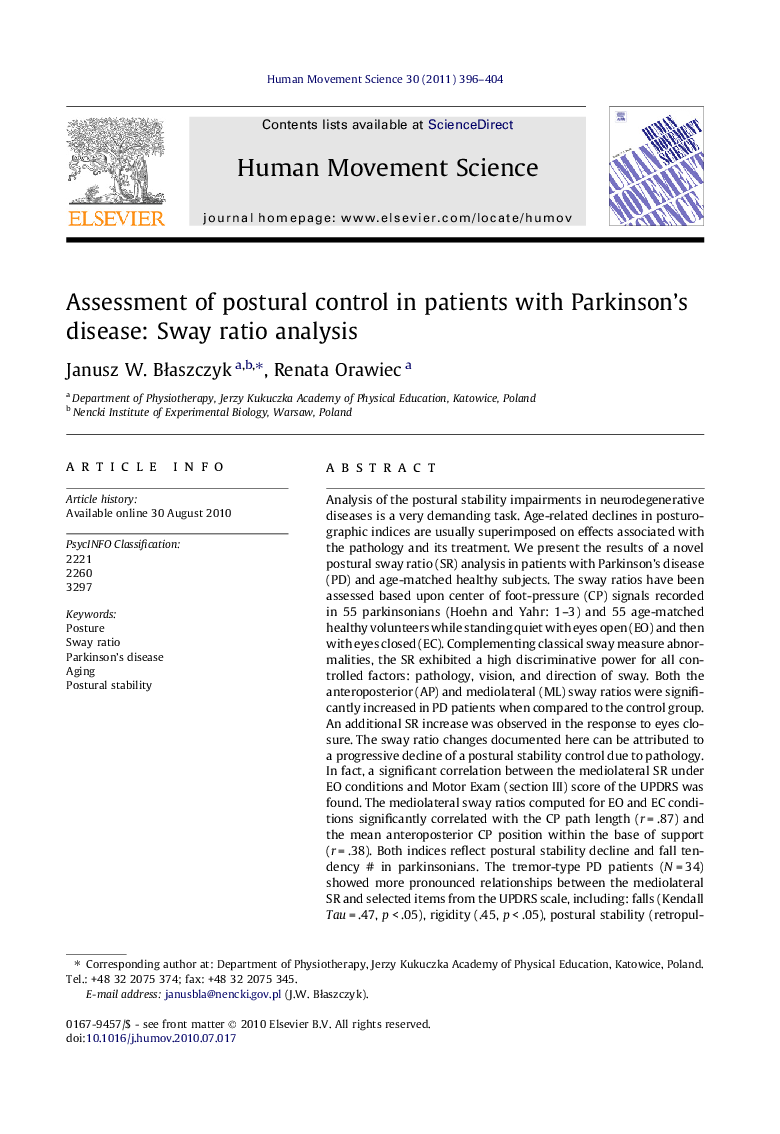| Article ID | Journal | Published Year | Pages | File Type |
|---|---|---|---|---|
| 928663 | Human Movement Science | 2011 | 9 Pages |
Analysis of the postural stability impairments in neurodegenerative diseases is a very demanding task. Age-related declines in posturographic indices are usually superimposed on effects associated with the pathology and its treatment. We present the results of a novel postural sway ratio (SR) analysis in patients with Parkinson’s disease (PD) and age-matched healthy subjects. The sway ratios have been assessed based upon center of foot-pressure (CP) signals recorded in 55 parkinsonians (Hoehn and Yahr: 1–3) and 55 age-matched healthy volunteers while standing quiet with eyes open (EO) and then with eyes closed (EC). Complementing classical sway measure abnormalities, the SR exhibited a high discriminative power for all controlled factors: pathology, vision, and direction of sway. Both the anteroposterior (AP) and mediolateral (ML) sway ratios were significantly increased in PD patients when compared to the control group. An additional SR increase was observed in the response to eyes closure. The sway ratio changes documented here can be attributed to a progressive decline of a postural stability control due to pathology. In fact, a significant correlation between the mediolateral SR under EO conditions and Motor Exam (section III) score of the UPDRS was found. The mediolateral sway ratios computed for EO and EC conditions significantly correlated with the CP path length (r = .87) and the mean anteroposterior CP position within the base of support (r = .38). Both indices reflect postural stability decline and fall tendency # in parkinsonians. The tremor-type PD patients (N = 34) showed more pronounced relationships between the mediolateral SR and selected items from the UPDRS scale, including: falls (Kendall Tau = .47, p < .05), rigidity (.45, p < .05), postural stability (retropulsion) (.52), and the Motor Exam score (.73). The anteroposterior SR correlated only with tremor (Kendal Tau = .77, p < .05). It seems that in force plate posturography the SR can be recommended as a single reliable measure that allows for a better quantitative assessment of postural stability impairments.
